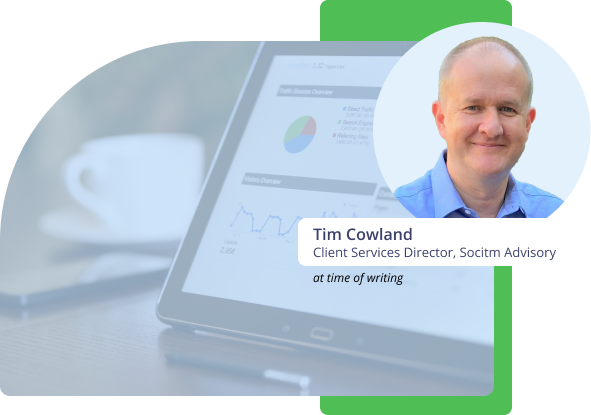We continue to hear from leaders across housing about their data challenges.
There is urgency for improved accuracy and transparency, but it can leave people overwhelmed with where to start. For anyone feeling this way, please know you are not alone.
But we must also be clear that if action is not taken proactively, an incident will eventually force your hand.
Data is a challenge across the housing sector
As a sector, housing has been left feeling that, often, the data it has been collecting, analysing and using to influence decision making has not been telling an accurate story.
This means that housing association boards and senior leaders no longer feel they can trust that data to truthfully show that vulnerable people are safe, that buildings are secure and that issues are flagged before they escalate.
There are calls for greater levels of assurance, but in reality that takes time, skills, investment and broader organisational transformation. Landlords are at different stages on their data journeys. But collectively there is a recognition of the need for transformation. This isn’t about investing in costly systems or assigning individual blame for missing or inaccurate information.
Cultural Shift
This is about a wider cultural shift happening across housing – including a no blame culture that welcomes openness and honesty. Data is part of everyone’s role and is everyone’s responsibility. New processes need to be put in place, staff need to be trained to gather new and different information – and feel connected to why it matters.
Then we need to be able to use and analyse the data, identifying truthful stories of operational performance and opportunities to improve.
We cannot ignore that there are significant problems with damp and mould in our housing stock. And, as we move into a new era of greater scrutiny and more empowered tenants, we cannot ignore that there is significant room for improvement.
Both the Regulator and the Ombudsman have repeated that accurate data needs to be at the heart of reforms in the sector. They recognise that good governance and real service reform is not possible without this.
We know that this is challenging but we have seen from our work across local government and housing that change is possible if we approach it with honesty and in a planned way.
For landlords on a data journey, here’s our three-step guide on where to start tackling problems around data.
Assess your data maturity
The first step on a data journey is to understand the current state of your data – evaluate existing practices and identify any gaps in the system. This means honestly assessing data quality, governance, security, access, and usage across different departments and systems within your organisation.
Once the current state is understood, the next step is to establish a benchmark – so we need to be clear what good looks like for different data sets.
Next, identify the areas that require the most attention using a risk based approach. Data breaches, privacy violations and data linked to tenant and building safety can have severe consequences – so they are good places to start.
Create a data strategy
It is important to defining your vision for how your organisation wants to use data, including identifying the desired outcomes and goals for managing data effectively. The vision should be aligned with the overall business strategy and reflect your organisation’s priorities and values.
You need good data governance principles, including guidelines for data quality, security, privacy, and compliance.
Embedding data in culture is critical. The culture should promote data literacy, encourage data-driven decision-making, and foster a mindset of continuous improvement. This includes providing training and resources to help employees understand how to work with data effectively.
Once you know the destination, you’ll need a roadmap to help transition from the current state to achieving the vision in your strategy. This includes identifying and building the skills across the whole organisation which are needed to maximise the benefits of data.
Put good data architecture in place
You’ll need the right systems and processes in place to make sure you can deliver on your strategy. You’ll need a data storage system that is scalable and adaptable to support your changing data needs and the ability to integrate data from multiple sources so you are left with a unified view of what your data is telling your organisation.
Security is a significant component of this data architecture as is data analytics that will give the insights and make informed decisions.
4. Data-driven decision making
In today’s data-driven world, organisations need to be leveraging the data at their finger tips to make better decisions.
Customer data gives you insights into customer behaviour, preferences, and needs – understanding the ‘as-is’, but can also ultimately be used to forecast and model service evolution, improve customer service, and improve how we work to meet changing needs.
Data can be powerful in terms of building improved services, but also in helping us to mitigate risks in our homes and comply with regulation. However, this can only happen if we are confident in the information we hold.
About the author
Tim Cowland leads Socitm Advisory’s housing consultancy services. Please contact us to speak to Tim for more details on the services we can offer housing organisations, or browse online for more details.
